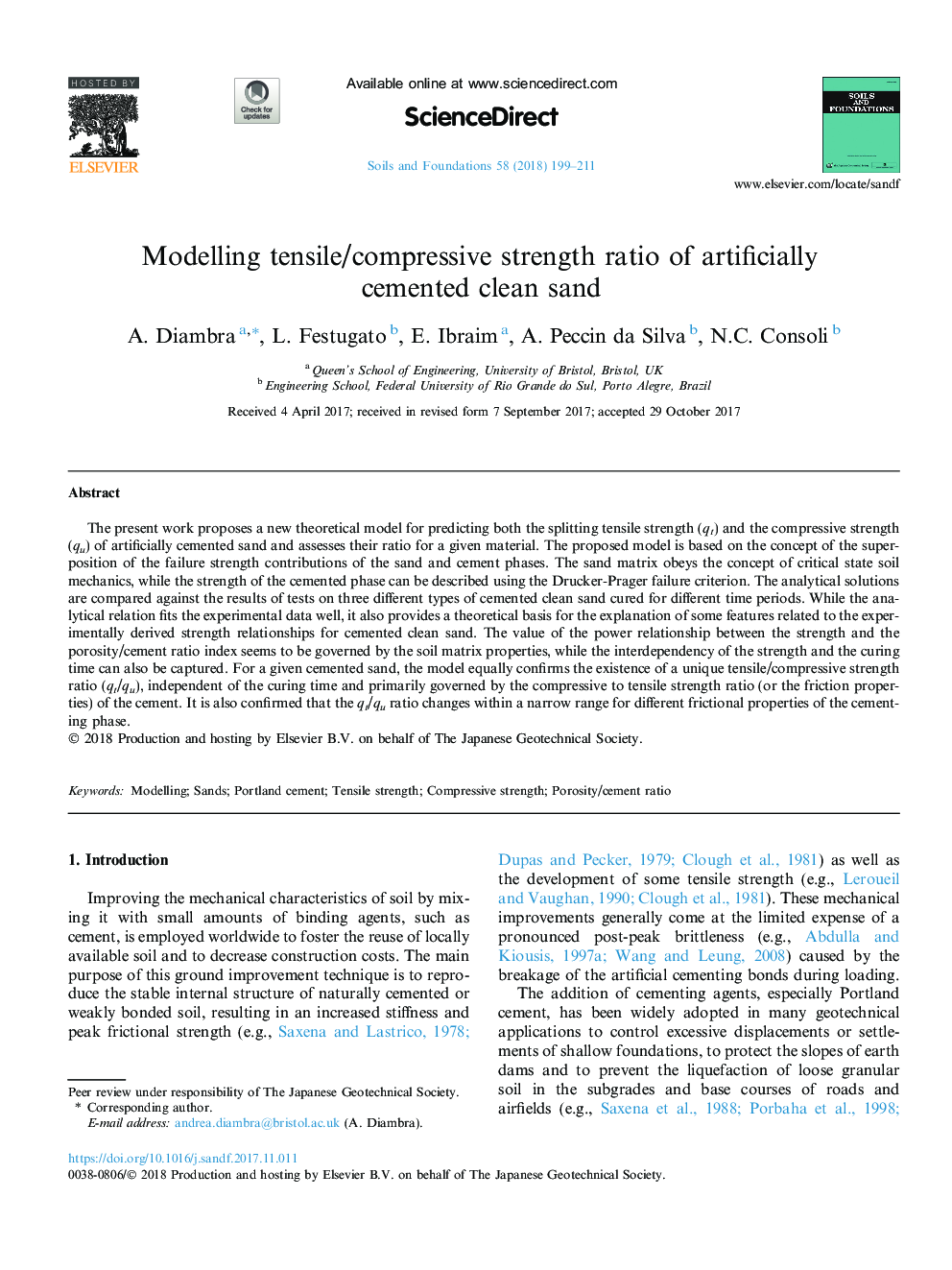| Article ID | Journal | Published Year | Pages | File Type |
|---|---|---|---|---|
| 6773875 | Soils and Foundations | 2018 | 13 Pages |
Abstract
The present work proposes a new theoretical model for predicting both the splitting tensile strength (qt) and the compressive strength (qu) of artificially cemented sand and assesses their ratio for a given material. The proposed model is based on the concept of the superposition of the failure strength contributions of the sand and cement phases. The sand matrix obeys the concept of critical state soil mechanics, while the strength of the cemented phase can be described using the Drucker-Prager failure criterion. The analytical solutions are compared against the results of tests on three different types of cemented clean sand cured for different time periods. While the analytical relation fits the experimental data well, it also provides a theoretical basis for the explanation of some features related to the experimentally derived strength relationships for cemented clean sand. The value of the power relationship between the strength and the porosity/cement ratio index seems to be governed by the soil matrix properties, while the interdependency of the strength and the curing time can also be captured. For a given cemented sand, the model equally confirms the existence of a unique tensile/compressive strength ratio (qt/qu), independent of the curing time and primarily governed by the compressive to tensile strength ratio (or the friction properties) of the cement. It is also confirmed that the qt/qu ratio changes within a narrow range for different frictional properties of the cementing phase.
Related Topics
Physical Sciences and Engineering
Earth and Planetary Sciences
Geotechnical Engineering and Engineering Geology
Authors
A. Diambra, L. Festugato, E. Ibraim, A. Peccin da Silva, N.C. Consoli,
